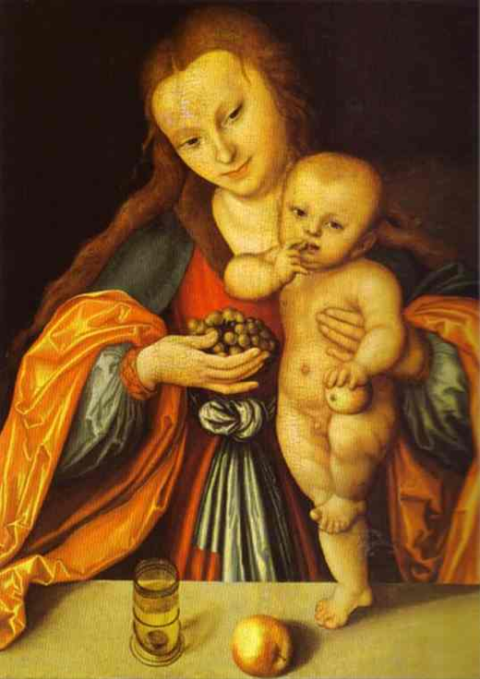The austere and the sensual

Oh, to be in Rome or Paris this season, where one could
attend blockbuster showings of the art of Lucas Cranach. Jackie Wallschlager says
the painter "is becoming the Old Master for the early 21st century."
The exhibits display what one critic has called "Lutheran austerity": Luthers, epic
crucifixions and the like.
Simultaneously, the events include paintings by the same
artist of what Wallschlager calls "slinking nudes," often Venuses (once banned
on posters in London's underground) and Three Graces "seen from the front,
back, and in profile." "Wily, worldly, witty" Cranach favored "small, high
breasts, nipped waists, rounded stomachs, and elongated [erotic] forms" that
were sometimes sarcastically provoking. This "chief artist of the Reformation
knew how to deliver a frisson of sensual delight wrapped in a parable," as with
a woman painted as "an emblem of lasciviousness."
The Reformers knew what was going on. Cranach stood up for
Luther and wife at their betrothal; he was godfather to a Luther child and vice
versa. Ex-nun and wife-to-be Katharina was a maid at Cranach's home when Luther
came calling for a bride. Cranach painted the Luthers' parents and children.
How did Luther justify his support of this supplier of
virtual centerfold images for Wittenberg? If anyone can find a signal that
Luther was disturbed or put off by the interplay of images from the brush of
one man, they will do better than I.
Some explain all this by showing that Cranach was
patriarchal and parabolic in his treatment of women figures, but still, he must
have gotten pleasure out of his attention to the detail of these very slightly
limbed women. Lutherans like the Latin word simul,
speaking of how the human is simul justified
and a sinner. Maybe Cranach, in a similarly simul
spirit, was juxtaposing and correlating "austere Lutheranism" with sensual and
sexy portrayals of women.
We can't settle that here. For now, it is amusing to ponder
this strange simul representation and
then hail Cranach, who knew a thing or two about dimensions of life that the
austere and the sensualists often
suggest cannot appear in the same artist, subject or Reformation.
Those who want a visual hint of what I am talking about
might pursue this
link.





